Voices of Change
Posted on April 1, 2015 by bob in Features
Do you find yourself stopping on Taxi Driver every time you run across it while channel flipping? Or shedding a tear each time you watch The Godfather? How about singing along to “Mrs. Robinson” when it’s on the radio or adding tunes by Bob Dylan, Joni Mitchell, or Joan Baez to new playlists you create?
If you answered “yes” to any of these questions, you owe a “thank you” to a group you may not have heard of, but who have been nevertheless entertaining Americans for decades: the war babies.
Born between 1939 and 1945, the war babies are often overshadowed by the two generations that bookend them: the “greatest generation” and the baby boomers. And while boomers often take a lot of the credit for reshaping American culture in the second half of the 20th century, the fact is that the war babies had by far the biggest impact on American postwar music and movies.
Prior to the 1960s and ’70s, popular music and filmmaking were generally designed to appeal to entire families and often reinforced the country’s core values and traditions. But as war babies began to compose, write, and perform, that changed.
Music became dissonant, more complex, and less melodious — both in sound and substance — and connected intimately with audiences’ private tensions and pain. Likewise, movies became more personal and idiosyncratic, speaking to their audiences’ social concerns and private predicaments. While songs and films from this era certainly gave meaning to boomers’ lives and influenced their own development, the boomer generation was the recipient of the new creative movement, not its originator.
This distinctive generation produced individuals who were instrumental in shaping the country’s culture and politics during the last half of the twentieth century. Elements of American life influenced 12 war baby entertainers as they were growing up in the 1940s and 1950s, and those influences shaped their music and films.
Francis Ford Coppola was born in Detroit in 1939. As a child, Francis contracted polio—the most dreaded disease of the first 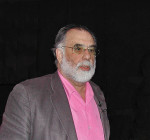 half of the 20th century. Confined to a bed, he created a puppet theater, a traditional form of Italian entertainment, one he reproduced in the early 20th century segment of The Godfather: Part II. The experience of polio also taught Coppola how to flourish alone, entertaining himself—an example of the reliance on one’s own personality, instincts, and emotional resources, a trait that characterized so many of the members of the war baby generation.
half of the 20th century. Confined to a bed, he created a puppet theater, a traditional form of Italian entertainment, one he reproduced in the early 20th century segment of The Godfather: Part II. The experience of polio also taught Coppola how to flourish alone, entertaining himself—an example of the reliance on one’s own personality, instincts, and emotional resources, a trait that characterized so many of the members of the war baby generation.
Martin Scorsese was born in 1942 in Queens. As a boy, Scorsese (like Coppola) was ill; he had severe asthma and was unable to 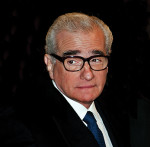 play sports or engage in other physically demanding activities. So Scorsese was isolated from other people, a lonesome introvert spending much of his childhood staring out the window of his house and later his apartment in Little Italy in Manhattan. As an escape from his cloistered surroundings, his father often took him to the movies, where Scorsese first discovered a passion for an art form that shaped the rest of his life. In fact, as a young child Scorsese began to draw cartoons and then scenes from the movies he saw, almost as if he were creating story-boards for a film of his own. Like Coppola, Scorsese learned early on to depend on his own visual fantasies and imagination. Consequently, Scorsese could not decide early in his life whether he wanted to be a painter, a filmmaker, or a priest. But what he did do, as an adult, was capture in his movies the vibrancy and violence of the streets in Little Italy.
play sports or engage in other physically demanding activities. So Scorsese was isolated from other people, a lonesome introvert spending much of his childhood staring out the window of his house and later his apartment in Little Italy in Manhattan. As an escape from his cloistered surroundings, his father often took him to the movies, where Scorsese first discovered a passion for an art form that shaped the rest of his life. In fact, as a young child Scorsese began to draw cartoons and then scenes from the movies he saw, almost as if he were creating story-boards for a film of his own. Like Coppola, Scorsese learned early on to depend on his own visual fantasies and imagination. Consequently, Scorsese could not decide early in his life whether he wanted to be a painter, a filmmaker, or a priest. But what he did do, as an adult, was capture in his movies the vibrancy and violence of the streets in Little Italy.
 Al Pacino was born in 1940 in New York to Italian-American parents (like Coppola and Scorsese). Pacino’s parents divorced when he was two years old, and his mother moved to the South Bronx to live with her parents, who came from—if you can believe it—Corleone, Sicily.
Al Pacino was born in 1940 in New York to Italian-American parents (like Coppola and Scorsese). Pacino’s parents divorced when he was two years old, and his mother moved to the South Bronx to live with her parents, who came from—if you can believe it—Corleone, Sicily.
Robert De Niro, whose background is both Italian and Irish, was born in New York in 1943 and grew up in Little Italy. De 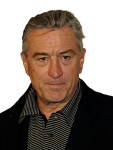 Niro’s father was a painter and sculptor and his mother a painter and poet. De Niro himself displayed an early talent for acting, playing the Cowardly Lion at age 10 in a grade school production of The Wizard of Oz. As a young man, De Niro studied Method acting, which emphasized the need for an actor to draw on his or her own psychological resources, and on memories and past experiences. It’s easy to see how De Niro’s upbringing in Little Italy prepared him for his Oscar-winning role as Vito Corleone in Coppola’s The Godfather: Part II. De Niro’s identity as a New Yorker also enabled him to develop a close affinity with Martin Scorsese. De Niro and Scorsese collaborated on many films that influenced and reflected the experiences of war babies: Mean Streets, Taxi Driver, Raging Bull, The King of Comedy, and Goodfellas all come to mind.
Niro’s father was a painter and sculptor and his mother a painter and poet. De Niro himself displayed an early talent for acting, playing the Cowardly Lion at age 10 in a grade school production of The Wizard of Oz. As a young man, De Niro studied Method acting, which emphasized the need for an actor to draw on his or her own psychological resources, and on memories and past experiences. It’s easy to see how De Niro’s upbringing in Little Italy prepared him for his Oscar-winning role as Vito Corleone in Coppola’s The Godfather: Part II. De Niro’s identity as a New Yorker also enabled him to develop a close affinity with Martin Scorsese. De Niro and Scorsese collaborated on many films that influenced and reflected the experiences of war babies: Mean Streets, Taxi Driver, Raging Bull, The King of Comedy, and Goodfellas all come to mind.
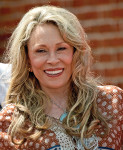 Faye Dunaway was born in 1941 in relatively impoverished conditions in Florida. She picked cotton as a child, all the while (at the urging of her mother) dreaming of a better life. From the beginning, she had a difficult, painful relationship with her father. He was a career soldier who served in the war and stayed in the army afterwards, while also having affairs with women. The closest Dunaway came to her father during World War II was listening to battle reports on the radio. All of these experiences inspired in Dunaway an early ambition to flee from her feelings of childhood alienation, to escape to the big city and become a star. She decided at the age of five that she wanted to be an actress and began taking dancing and singing classes. It was precisely these incipient influences that prepared her for the movie role of a lifetime in 1967, as Bonnie Parker in Bonnie and Clyde, another desperate, lonely young woman who hungers for fame. Bonnie became Dunaway’s signature role, one that not only made her a movie star but the most idiosyncratic actress of her generation.
Faye Dunaway was born in 1941 in relatively impoverished conditions in Florida. She picked cotton as a child, all the while (at the urging of her mother) dreaming of a better life. From the beginning, she had a difficult, painful relationship with her father. He was a career soldier who served in the war and stayed in the army afterwards, while also having affairs with women. The closest Dunaway came to her father during World War II was listening to battle reports on the radio. All of these experiences inspired in Dunaway an early ambition to flee from her feelings of childhood alienation, to escape to the big city and become a star. She decided at the age of five that she wanted to be an actress and began taking dancing and singing classes. It was precisely these incipient influences that prepared her for the movie role of a lifetime in 1967, as Bonnie Parker in Bonnie and Clyde, another desperate, lonely young woman who hungers for fame. Bonnie became Dunaway’s signature role, one that not only made her a movie star but the most idiosyncratic actress of her generation.
Judy Collins was born in Seattle in 1939. She started piano lessons when she was five years old, practicing Chopin and Debussy 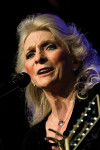 in the belief that she might someday become a serious classical pianist. But she also sang along with music on the radio, in her church choir, and for anyone who would listen. She was a child envisioning what it might feel like to be a show business idol — a dream that was reinforced by her father, a musician who had his own radio program during the early years of the war and was later hired by NBC for a show broadcast from Hollywood. There he took Collins to meet or watch radio superstars like Bob Hope and Red Skelton. (Collins also had another cultural influence in her milieu, though in this case the stimulus was literary rather than musical. Her godfather, named Holden, met J.D. Salinger in the army during World War II. Salinger eventually named his most famous creation, Holden Caulfield in The Catcher in the Rye, after Collins’s godfather.)
in the belief that she might someday become a serious classical pianist. But she also sang along with music on the radio, in her church choir, and for anyone who would listen. She was a child envisioning what it might feel like to be a show business idol — a dream that was reinforced by her father, a musician who had his own radio program during the early years of the war and was later hired by NBC for a show broadcast from Hollywood. There he took Collins to meet or watch radio superstars like Bob Hope and Red Skelton. (Collins also had another cultural influence in her milieu, though in this case the stimulus was literary rather than musical. Her godfather, named Holden, met J.D. Salinger in the army during World War II. Salinger eventually named his most famous creation, Holden Caulfield in The Catcher in the Rye, after Collins’s godfather.)
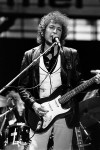 Bob Dylan wasn’t always Bob Dylan — he was born Robert Zimmerman in 1941 in Duluth, Minnesota. Like many war babies who became filmmakers or songwriters, Zimmerman came from a musical background; his father played violin. Zimmerman’s father also had polio and was exempt from the war. Zimmerman’s uncles, however, were soldiers who (like most veterans) were reluctant ever to discuss their often grisly experiences in the war. Zimmerman himself, even as a child, was taciturn, remote, and secretive — qualities that would mark his persona as an adult. He devoted a good part of his youth to listening to blues and country music on the radio. By the late 1950s, as he embarked on his own singing career, Zimmerman renamed himself Bob Dylan in honor of one of his favorite writers, Dylan Thomas.
Bob Dylan wasn’t always Bob Dylan — he was born Robert Zimmerman in 1941 in Duluth, Minnesota. Like many war babies who became filmmakers or songwriters, Zimmerman came from a musical background; his father played violin. Zimmerman’s father also had polio and was exempt from the war. Zimmerman’s uncles, however, were soldiers who (like most veterans) were reluctant ever to discuss their often grisly experiences in the war. Zimmerman himself, even as a child, was taciturn, remote, and secretive — qualities that would mark his persona as an adult. He devoted a good part of his youth to listening to blues and country music on the radio. By the late 1950s, as he embarked on his own singing career, Zimmerman renamed himself Bob Dylan in honor of one of his favorite writers, Dylan Thomas.
Joan Baez was born in 1941 on Staten Island to a Mexican father and Scottish mother. Baez soon moved with her parents to 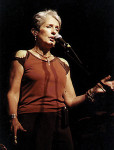 Menlo Park, California, where her father studied at Stanford for a master’s degree in mathematics and taught military engineers during the war. But despite his background in math and physics, he was a pacifist and refused to work on the atomic bomb at Los Alamos. His pacifism influenced his daughter, who became a lifelong pacifist herself. While growing up in California, Baez began experimenting with rhythm and blues on a ukulele. From childhood, she was also blessed with an exquisite singing voice—one she learned early to develop as a way of fitting in, as half-Mexican, with her white cohorts. Though Baez was born in the New York area, along with many other war babies who became prominent singers and songwriters, her exodus to California meant that she met none of them until she moved to Boston in 1958, where she began by the early 1960s to find fame. Notably, Baez met Bob Dylan, nurtured his early career, and was, episodically, his lover.
Menlo Park, California, where her father studied at Stanford for a master’s degree in mathematics and taught military engineers during the war. But despite his background in math and physics, he was a pacifist and refused to work on the atomic bomb at Los Alamos. His pacifism influenced his daughter, who became a lifelong pacifist herself. While growing up in California, Baez began experimenting with rhythm and blues on a ukulele. From childhood, she was also blessed with an exquisite singing voice—one she learned early to develop as a way of fitting in, as half-Mexican, with her white cohorts. Though Baez was born in the New York area, along with many other war babies who became prominent singers and songwriters, her exodus to California meant that she met none of them until she moved to Boston in 1958, where she began by the early 1960s to find fame. Notably, Baez met Bob Dylan, nurtured his early career, and was, episodically, his lover.
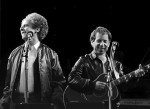 Paul Simon and Art Garfunkel were both born in 1941 and grew up in Queens. Simon came from a family of professional musicians and loved to listen to his father perform in bands. He was especially attracted to rumbas and sambas. Simon would later expand on this fascination with exotic rhythms when he started experimenting with Latin American and African music in the 1970s. But Simon had another passion as well—this one for the New York Yankees. So it was not surprising that “Where have you gone, Joe DiMaggio?” would become Simon’s most famous lyric in “Mrs. Robinson” in 1968.When Simon was 11 years old, he became friends with a classmate, Art Garfunkel, who lived just three blocks away. Garfunkel’s grandparents had migrated to America from Romania. Both he and Simon came from similar Jewish backgrounds and harbored similar musical ambitions, which Garfunkel’s parents (like Simon’s) encouraged. Once they discovered that they appreciated each other’s voices in harmony, they started to perform as a teenage duo in the 1950s in school and before audiences, even making a recording—all this before they emerged in the 1960s as two of the most poetic singers of the war baby generation.
Paul Simon and Art Garfunkel were both born in 1941 and grew up in Queens. Simon came from a family of professional musicians and loved to listen to his father perform in bands. He was especially attracted to rumbas and sambas. Simon would later expand on this fascination with exotic rhythms when he started experimenting with Latin American and African music in the 1970s. But Simon had another passion as well—this one for the New York Yankees. So it was not surprising that “Where have you gone, Joe DiMaggio?” would become Simon’s most famous lyric in “Mrs. Robinson” in 1968.When Simon was 11 years old, he became friends with a classmate, Art Garfunkel, who lived just three blocks away. Garfunkel’s grandparents had migrated to America from Romania. Both he and Simon came from similar Jewish backgrounds and harbored similar musical ambitions, which Garfunkel’s parents (like Simon’s) encouraged. Once they discovered that they appreciated each other’s voices in harmony, they started to perform as a teenage duo in the 1950s in school and before audiences, even making a recording—all this before they emerged in the 1960s as two of the most poetic singers of the war baby generation.
Joni Mitchell was born Roberta Joan Anderson in Canada in 1943. Her father served in World War II in the Royal Canadian Air 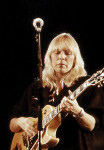 Force and was an amateur musician who played trumpet and worshipped the swing bands of the 1930s. At the same time, her mother instilled in Mitchell a sensitivity to poetic language, especially as exemplified in Shakespeare. Later, at the age of eight in 1951, Mitchell caught polio and began singing in the hospital. Her response to the disease, as well as the musical and literary interests of her parents, were the origins of her career as a sophisticated singer and composer who shaped American music like Dylan and Simon and Garfunkel.
Force and was an amateur musician who played trumpet and worshipped the swing bands of the 1930s. At the same time, her mother instilled in Mitchell a sensitivity to poetic language, especially as exemplified in Shakespeare. Later, at the age of eight in 1951, Mitchell caught polio and began singing in the hospital. Her response to the disease, as well as the musical and literary interests of her parents, were the origins of her career as a sophisticated singer and composer who shaped American music like Dylan and Simon and Garfunkel.
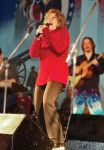 Carole King was born in New York in 1942, where the most valued piece of furniture in her home was a piano. King began making up songs on the piano when she was three years old and started her first piano lessons when she was four. King’s mother took her as a young child to Broadway musicals and collected cast recordings of shows like Oklahoma! and Carousel, to which King eagerly and repeatedly listened. All of these childhood experiences were the catalyst for King’s emergence as a major songwriter and performer in the 1960s and 1970s.
Carole King was born in New York in 1942, where the most valued piece of furniture in her home was a piano. King began making up songs on the piano when she was three years old and started her first piano lessons when she was four. King’s mother took her as a young child to Broadway musicals and collected cast recordings of shows like Oklahoma! and Carousel, to which King eagerly and repeatedly listened. All of these childhood experiences were the catalyst for King’s emergence as a major songwriter and performer in the 1960s and 1970s.
Of course, this is only a small sampling of war baby entertainers and artists who modernized music and film in America. Others include George Lucas, Jerry Garcia, and Lily Tomlin—not to mention foreign singers/songwriters, directors, and actors. For instance, all the Beatles as well as Mick Jagger and Keith Richards of the Rolling Stones were born between 1940 and 1943.
Members of this unique generation (which has been unfairly overshadowed by the boomers) were born, grew up, and became adults during the most stressful and transformative years of the 20th century—and their responses to the crises they faced were ingenious. Using their own pasts, experiences, and private struggles, they crafted a cultural revolution from which we’re still reaping the benefits today.
Richard Pells is Professor of History Emeritus at The University of Texas at Austin and the author of War Babies: The Generation That Changed America (Cultural History Press).









